Click on images to enlarge

habit (Photo: Sheldon Navie)
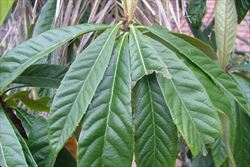
leaves (Photo: Sheldon Navie)
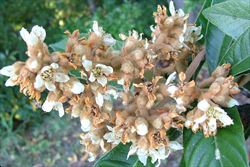
flower cluster (Photo: Sheldon Navie)
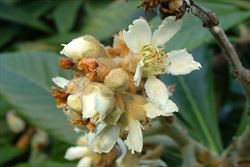
close-up of flowers (Photo: Sheldon Navie)
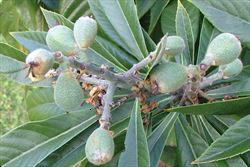
immature fruit (Photo: Sheldon Navie)
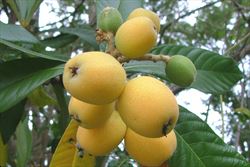
mature fruit (Photo: Sheldon Navie)
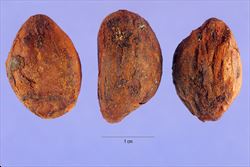
close-up of seeds (Photo: Steve Hurst at USDA PLANTS Database)
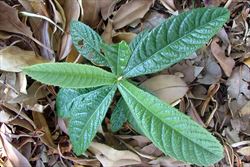
seedling (Photo: Sheldon Navie)
Scientific Name
Eriobotrya japonica (Thunb.) Lindl.
Synonyms
Mespilus japonica Thunb.
Family
Malaceae (New South Wales)Rosaceae (Queensland, the ACT, Victoria, Tasmania, Western Australia and South Australia)
Common Names
bibasse, Japanese medlar, Japanese plum, loquat
Origin
Native to eastern Asia (i.e. China, Japan and Taiwan).
Naturalised Distribution
Loquat (Eriobotrya japonica) is widely naturalised in the coastal districts of eastern Australia and also present in some parts of southern Australia. It is mainly found throughout the coastal districts of eastern Queensland and eastern New South Wales, is present in the coastal districts of south-western Western Australia, and is incipiently naturalised near Melbourne in southern Victoria. Also naturalised on Lord Howe Island and on Norfolk Island.
Naturalised overseas in southern USA (i.e. California, Louisiana and Florida), South Africa, La Réunion, New Zealand and on some Pacific islands (i.e. Hawaii and Tonga).
Notes
This species is an environmental weed in New South Wales and Queensland, and is also regarded as a potential environmental weed or "sleeper weed" in other parts of Australia. It is particularly common in south-eastern Queensland, where it is ranked among the 200 most important invasive plant species, and in north-eastern New South Wales, where it appears on several local environmental weed lists (e.g. the New South Wales North Coast Environmental Weed Survey list and the Coffs Harbour City Council and Lismore City Council environmental weed lists).
Loquat (Eriobotrya japonica) has mainly become naturalised in dry sclerophyll forests and along waterways in these regions. It has also been recorded in conservation areas in Queensland (e.g. Tugun Hill Conservation Area on the Gold Coast) and New South Wales (e.g. Heinrich Reserve in the Sydney region).
Overseas, loquat (Eriobotrya japonica) has been recorded as a weed in dry summer-rainfall areas in South Africa, where it is noted to compete with native vegetation. It has also become naturalised in mixed mesic forests and along roadsides in some parts of Hawaii and on hillsides and in scrub vegetation in New Zealand.

